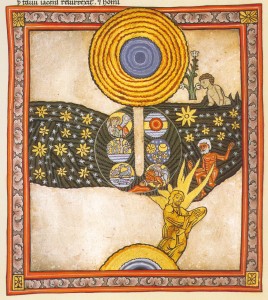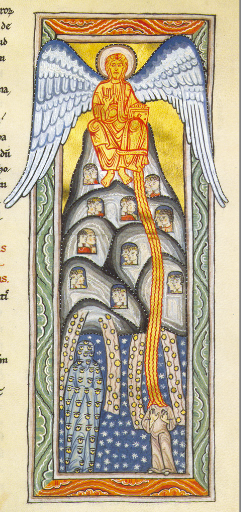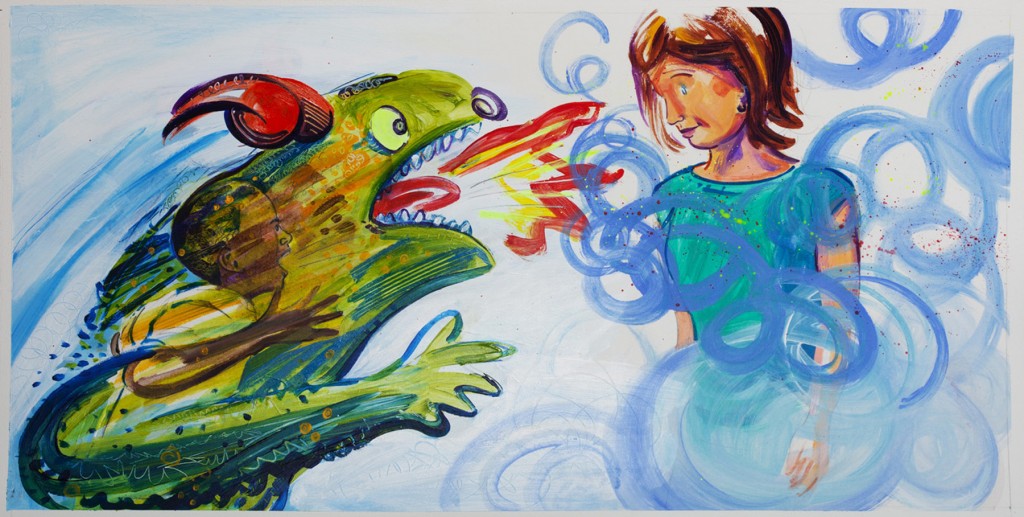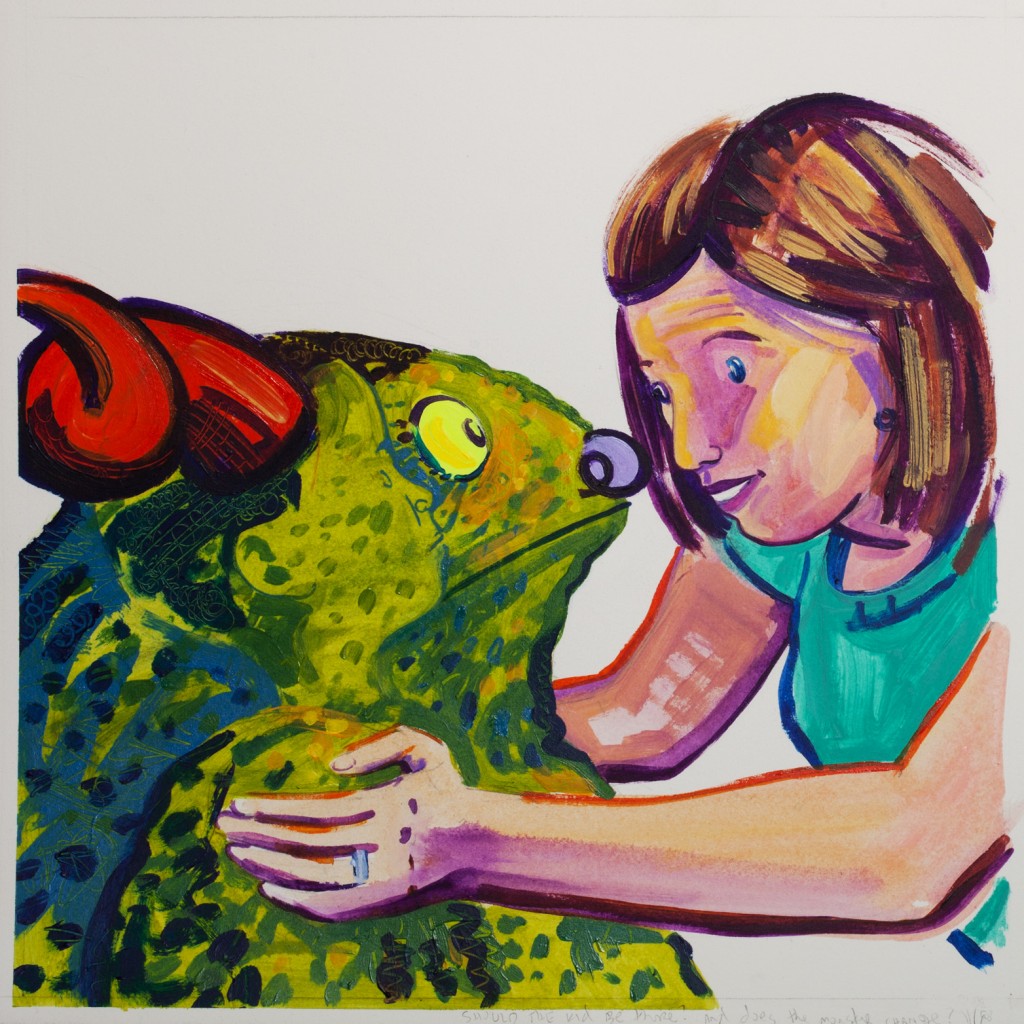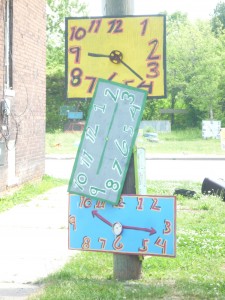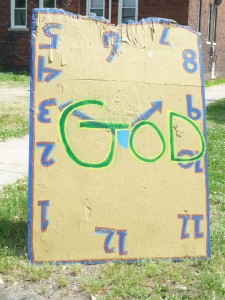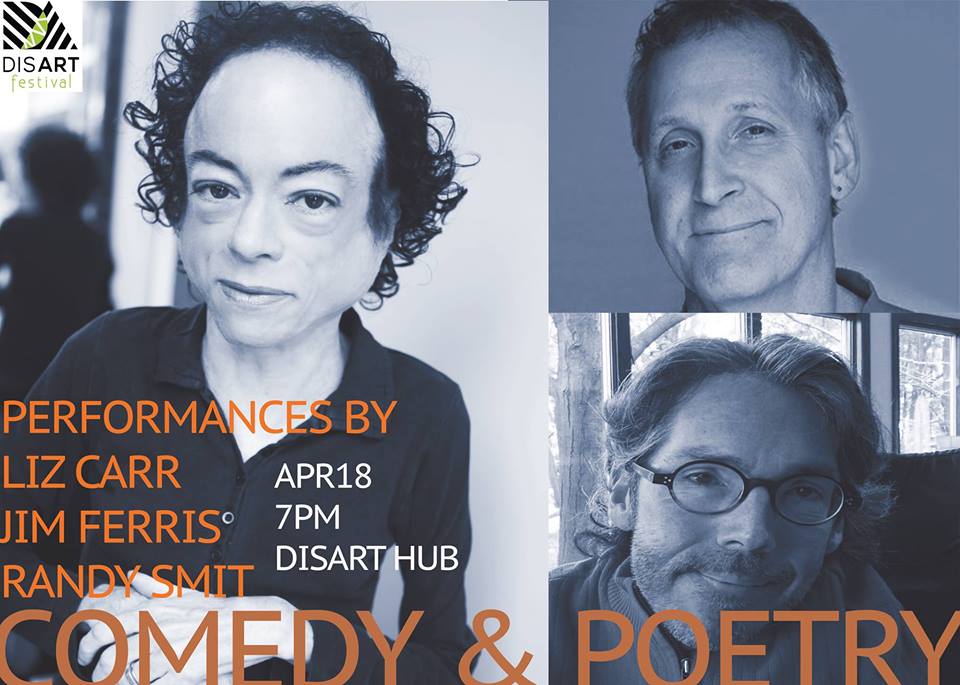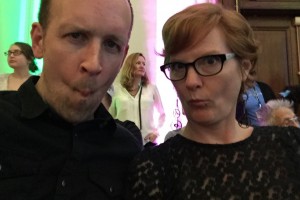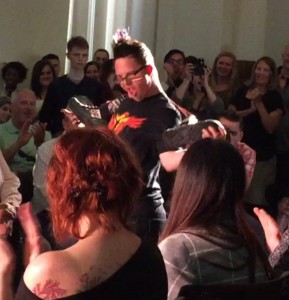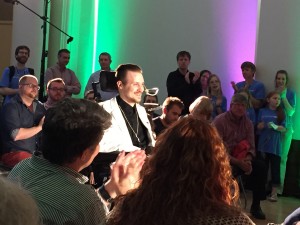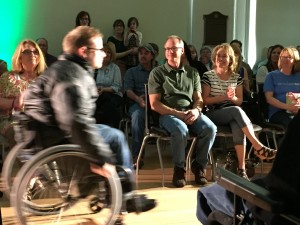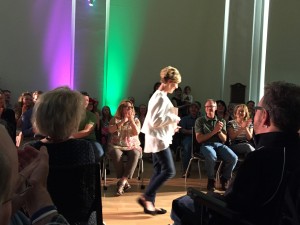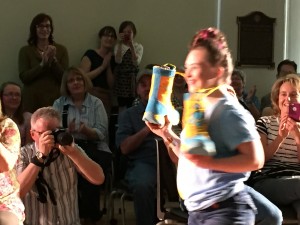I recently took myself out on an artist’s date — something Julia Cameron recommends in her book on creativity, The Artist’s Way. My city is having a festival of art by people who have disabilities, so for my artist’s date, I went to the galleries to see the static visual art, and found myself compelled by the choices the artists made regarding where their subject (when their art included a subject) was looking.
- Is the subject looking away from the viewer If so, how? Demurely? Fearfully? Disdainfully? Heroically?
- If the subject has closed eyes, is the subject hiding? Or is it a symbol of willing vulnerability?
- Is the subject looking straight at the viewer? If so, how? Is it a challenge? An invitation? A plea? A statement of fact with little emotion?
* * * * *
At the Grand Rapids Art Museum, there were two paired portraits by David Lock. The watercolors (or, watercolours, since Lock is from the UK) are portraits of the head of a cobbled together person. The eyes are different from each other, there are different jawlines, different ears, different skin colors and textures, all in the same face. It’s like a cubist-style painting run amok. In each of the pairs (as they were hung here, at least), one subject looks away from the viewer, and the other looks right at the viewer — each in a different way.
Misfit (Smoke), 2012, had an averted gaze that felt like the gaze had slid away, as if the subject didn’t want to be looking at you looking at him. Misfit (Unwanted), 2012, looked right at you, and it felt like a challenge, probably because of the lifted angle of half of the chin and jawline. The other pair was quite different. In Misfit (Shadow), 2013, the subject looked slightly up into the middle distance, a classic hero pose. While its partner, Misfit (Slice), 2012, looked right at the viewer, but without much emotional content; the gaze didn’t feel like a plea or a challenge, it just was.
It made me think about all the varying expectations people who do not have physical disabilities (or at least, people whose bodies do not broadcast their disability) have when looking at someone with a disability. Do we think of them as embarrassed? As noble? As intrusive? As a blank?
And from the point of view of the person with a disability. Are they tired of everyone always looking at them? Do they feel pressure to be The Heroic Representative? Do they reject that pressure with an “F.U.” to those applying it? Do they just want to be, without worrying about how you see them?
You can see images of all four of these watercolours at Lock’s website.
* * * * *
My favorite venue was the 250 Monroe Street Gallery, which had pieces by West Michigan artists. Deb Dieppa showed Outsider Art-style pieces, bright and energetic works that incorporated lots of words. Marylu Dykstra had a number of paintings, including a series of waterfalls (water as both an image of crushing and of solace), and a painting called, Hope Emerges (2012), that had a tiny face of a woman surrounded by a highly textured, dark surface that reminded me of Great Canadian Shield rock.
But the other two artists there gave me more to think about in terms of this “gaze” question: Reyna Garcia and Robert Andy Coombs. Garcia had a number of works in the show, including a large installation of painting and photography, Ayotzinapa We All, her “reflections on her work as a community organizer to support the case of the disappearance of the 43 Normalista students last September 29, 2014 in Iguala, Guerrero, Mexico” (from her artist statement). But for these purposes, I want to talk about her series of three large paintings, “Voces de Esperanza (Voices of Hope), 2011-2013,” that focus on the immigrant experience. These looked very different from her protest paintings, which were full of heavy, saturated colors, and textured paints. The immigrant works had rich colors that I think of as clear — not in terms of being see-through, but not muddied. The paint is applied in a flatter style, using more sweeping strokes. (As a Canadian, they reminded me of Group of Seven, Lawren Harris’s work.)
And there are almost no distinguishable faces. Faces are plain ovals.
She doesn’t mention why in her artist statement. Was it to make the figures more universal? To make the story she tells less personal and more socio-cultural? I don’t know, but they were beautiful and striking, especially the blue female figure of hope rising out of the water, with the wind blowing her hair around coalescing into wings.
You can find images of the Voices of Hope series here; they were 2011 Art Prize entries.
* * * * *
But it was Robert Andy Coombs’s series of nude portraits that drew my attention the longest. First of all, they are beautiful bodies, beautifully lit, intriguingly lit even, with lots of interesting plays of light and shadow.
There were three shots of each subject: one close-up of the head and shoulders with the subject looking away, a full-body shot, and another close-up with the subject looking right at the viewer. Before I talk about the experience of looking at these photos, let me include Coombs’s words about the Disability and Sexuality Series, 2011-2012:
Having a disability myself, I am interested in photographing various types of physical disabilities, showing each individual as a sexual person. Despite having disabilities, the subjects are still human, therefore having sexual needs and desires. Photographing each subject nude allows the viewer to look at what goes on beneath clothing, showing scars, tattoos, and adaptations in order to lead functional lives. The subject’s gaze is an invitation to look, confronting the viewer, making each subject come to life.
An invitation and a confrontation, indeed! The first two subjects, especially so, because in order to even see that they were fully nude, you had to look right at their adaptations. You had to look right at the places their disabilities manifested themselves, which most people really don’t do. Or at least try not to do overtly. I admit, the first time, my gaze slid over the first one without looking closely enough to realize the man was fully nude. I had to go back to it when I saw the second subject’s full body shot. Just for that alone, this was a striking experience.
There were other things to think about in these photos. The first subject had a tattoo of folded hands on his chest, above them the words, “Pray for me.” Was that a sincere request? A bit of an “F.U.”? Both? Something else? Coombs has a tattoo on his collarbone, “Giving up is the ultimate tragedy,” that you’d be able to see if he wore a T-shirt, but he was dressed to the nines every time I saw him, so I never did.
Coombs was entirely successful in his desire to portray people with disabilities as sexual, but it wasn’t primarily because they were naked. It was in their eyes (whether closed or open), in the challenging lift of the chin (in Coombs’s full-body shot, in particular), in the softer mouth (an almost-smile?) of the third man that gave his final shot a come-hither invitation.
These were my favorites of the festival, for both the challenge and the invitation, as well as the sheer beauty of the images.
You can find images of the Disability and Sexuality series on Coombs’s website.
* * * * *
So lots to think about. Lots of questions to ask. Lots of beautiful and challenging images. In other words, an entirely successful artist’s date. If you are in the West Michigan area, the DisArt Festival continues through April 25, 2015, although some galleries will keep their works up longer. If not, I encourage you to take yourself on an artist’s date — fill that creative well for once, instead of just drawing from it.
If you’re interested in the other art forms on display at the festival, here are my reports on the Fashion Show and Poetry and Comedy Night.

